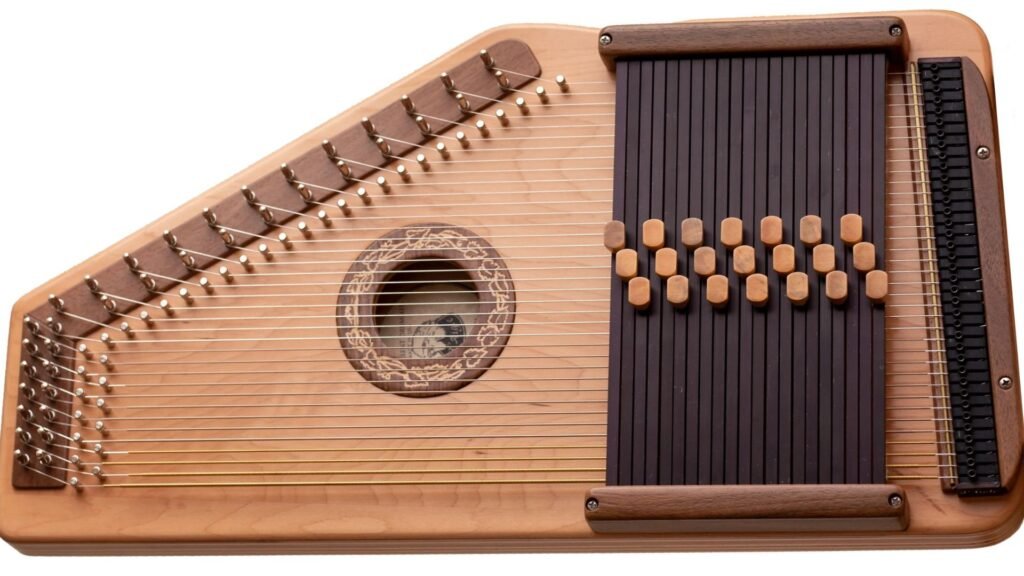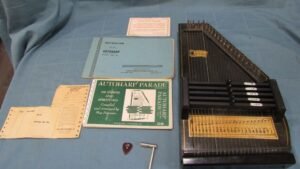
The autoharp is a versatile and charming instrument that’s perfect for both beginners and experienced musicians. With its unique sound and relatively easy learning curve, it’s a great choice for anyone looking to dive into the world of music. This guide will provide you with all the essentials you need to get started on your autoharp journey.

Understanding the Autoharp
What is an Autoharp?
The autoharp is a string instrument with a series of chord bars attached to dampers which, when pressed, mute all strings except those that form the desired chord. This allows for easy chord changes and makes the autoharp accessible for beginners.
Parts of the Autoharp
- Strings: Typically, there are 36 strings on an autoharp.
- Chord Bars: These bars are pressed to play chords.
- Tuning Pegs: These are used to tune the strings.
- Soundboard: The flat surface that amplifies the sound produced by the strings.
- Body: The main structure of the autoharp.
Choosing Your First Autoharp
Types of Autoharps
- 15-Chord Autoharp: Ideal for beginners, offers a basic range of chords.
- 21-Chord Autoharp: More versatile, suitable for advancing players.
Selecting the Right Model
Consider your budget, the type of music you want to play, and whether you prefer acoustic or electric models. Brands like Oscar Schmidt and Chromaharp are popular choices for their quality and reliability.
Tuning Your Autoharp
Basic Tuning Tips
- Use an electronic tuner for accuracy.
- Tune each string to the correct pitch, typically starting with the lowest string and working your way up.
- Regular tuning is essential for maintaining the autoharp’s sound quality.
Step-by-Step Tuning
- Attach the tuner to the autoharp.
- Pluck the string you want to tune.
- Adjust the tuning peg until the tuner indicates the correct pitch.
- Repeat for all strings.
Basic Playing Techniques
Holding the Autoharp
- Position the autoharp on your lap or use a strap.
- Ensure it is stable and comfortable to play.
Strumming Patterns
- Use a thumb pick or finger pick.
- Start with simple downstrokes, gradually incorporating upstrokes.
- Practice different strumming patterns to develop rhythm.
Chord Playing
- Press down on the desired chord bar.
- Strum across all the strings to play the chord.
- Practice transitioning between different chords smoothly.
Learning Basic Chords and Songs
Common Chords
- Start with simple chords like C, G, F, and D.
- Practice forming these chords and transitioning between them.
Easy Songs for Beginners
- “Twinkle, Twinkle, Little Star”
- “Amazing Grace”
- “You Are My Sunshine”
Maintenance and Care
Cleaning Your Autoharp
- Wipe down the body and strings after each use to remove dust and oils.
- Use a soft cloth and mild cleaning solution.
String Maintenance
- Replace strings periodically to maintain sound quality.
- Keep an extra set of strings and a string winder handy.
Storing Your Autoharp
- Store in a cool, dry place away from direct sunlight.
- Use a case to protect it from dust and damage.
Resources for Further Learning
Books and Online Courses
- “Mel Bay’s Complete Method for Autoharp” by Meg Peterson
- Online platforms like YouTube offer numerous tutorials and lessons.
Joining Communities
- Join autoharp forums and social media groups to connect with other players.
- Attend autoharp festivals and workshops to learn from experienced musicians.
Conclusion
Playing the autoharp can be a rewarding and enjoyable experience. With the right instrument, a bit of practice, and the resources provided in this guide, you’ll be well on your way to mastering the basics and exploring the full potential of this delightful instrument. Happy strumming!










